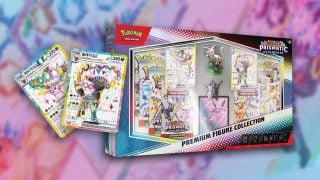When it comes to games about collecting monsters for the purpose of battling, there’s one that looms large. Even though Pokémon dominates the hearts and minds of the world when it comes to little combat-ready creatures, plenty of other franchises have popped up over the years chasing the same idea. One of those is Bakugan, a multimedia franchise that is based on a physical game involving plastic marbles that perform a Transformers-esque shapeshift when rolled onto special metal cards. The series has also had cartoons, card games, and, of course, video games.
The latest in the line of Bakugan video games is Bakugan: Champions of Vestroia, which comes to us from indie darlings WayForward. While young children who are fans of the series might find enjoyment in the game, odd design choices mean that even those kids might find the experience mind-numbing.
Brawl for naught
The game begins with your created character finding a meteorite in the woods that happens to have a sentient Bakugan inside. This is your starter monster. From there, you find other Bakugan around the various maps and form a team of three to battle it out with computer enemies, or to challenge people online, in what the game calls “Bakugan brawls”.
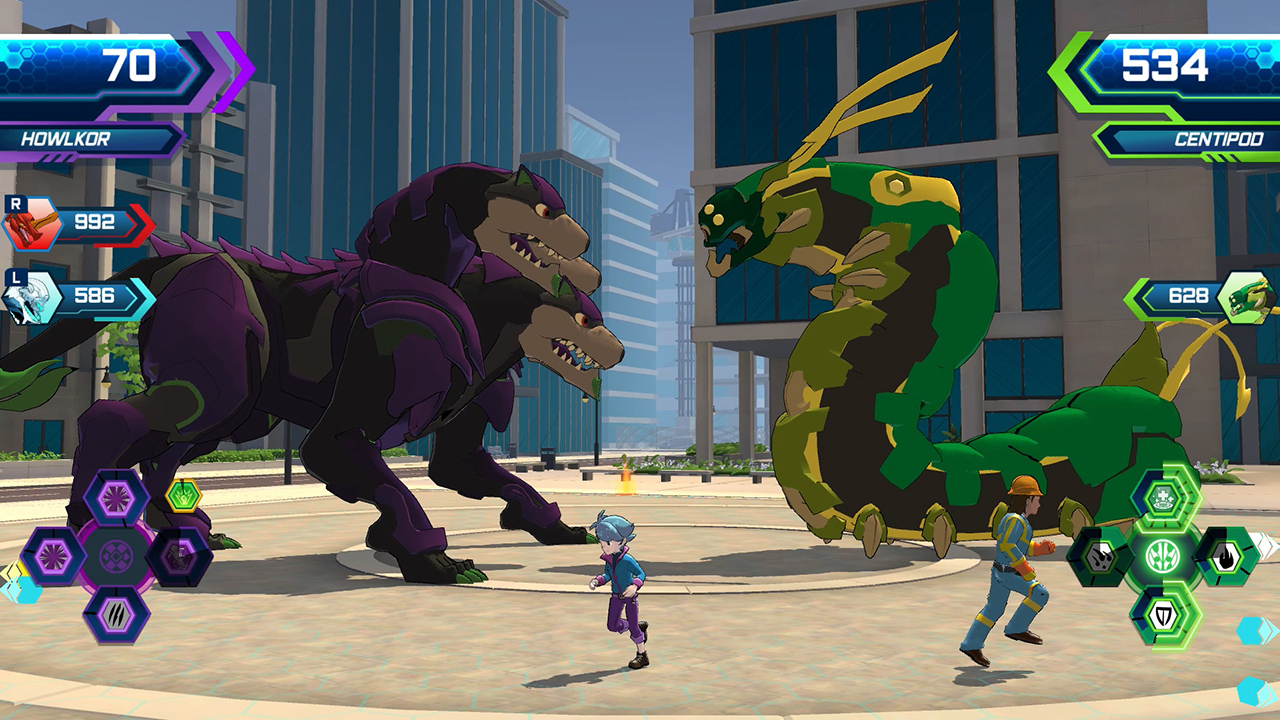
There are five different elements that the monsters can be, including fire, water, plant, light, and darkness. There can be different elements of the same Bakugan, so if you want a team of three different unicorns, go for it. The attacks your beasts use are essentially all earned through the equivalent to TMs in Pokémon, though the positive here is that you can switch out attacks at any time.
So far, it all sounds like a pretty standard monster battling affair. However, once you start the actual brawls, it becomes clear that the focus is different. Your character, the “brawler”, throws out one of your Bakugan, who goes from a tiny ball to a monster the size of a two-story building. You then switch to a side view of the monsters as you control your human character running around them. Basically, your Bakugan can’t do anything unless your brawler picks up hexagons on the floor called Bakucores. You can think of them as comparable to mana or MP in other video games. Your brawler throws the cores at your fighter, and once they have enough, they can use one of their abilities. Different abilities use different amounts of energy created by the cores.
Right away, the problems with the battle system start to rear their heads. In an attempt to make a turn-based battle more interactive, they have made the fights more about running from hexagon to hexagon with far less complexity in strategy. It takes several cores to use most abilities, though some cores give more energy. Therefore, to use one attack, you have to run to a hexagon, wait for your character to throw it, then find another one and run to it and repeat. Then, when you or your opponent has enough energy, an attack or powerup can be used, causing an unskippable attack animation every single time. So in summary, to use one attack, you are running, waiting to pick up and throw the hexagons, waiting for your opponent to finish their attack, just to use an counter with one of your own. The battles drag on forever. Any flow the game could have had is ruined by the never ending attack animations.
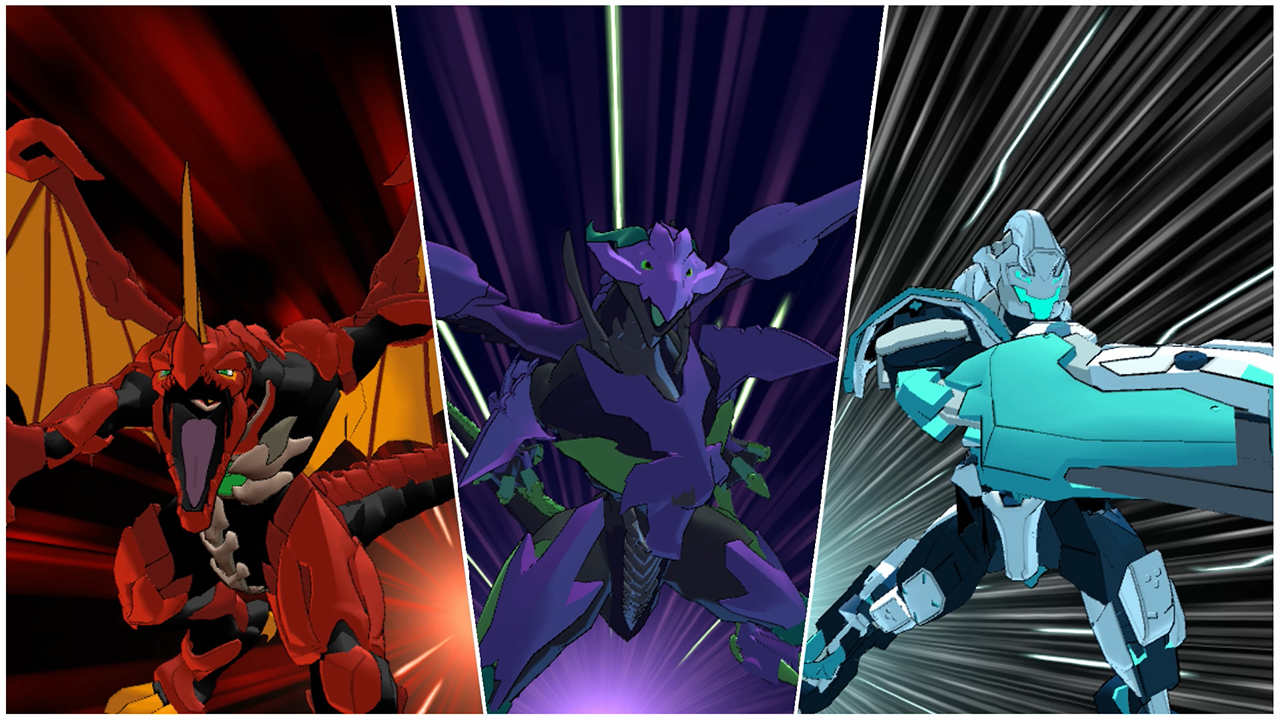
Even without the animations, though, I have to wonder why the Bakucore system was even implemented into the game. What seems like an interesting twist on the formula is ruined by a few small choices. It takes too much energy to do anything. It feels awful having to pick up several hexagons just to use your weakest attack. Even worse is how all of your Bakugan’s attacks share the same energy pool. You could spend a solid fifteen seconds gathering energy to give yourself a buff or stun your opponent, but by the time you gather the energy to follow up on that, you may only be able to get in one attack. At that point, you could have doubled your damage by attacking twice instead of focusing on buffing or stunning the opponent. The resources in the fights are far too precious to deviate from any strategy other than “just gather energy to use your strongest attack over and over”.
There are a few more factors that play into battles, such as elemental weaknesses, but they don’t amount to much. If you manage to completely fill the energy of all three of your Bakugan, you can use a team attack that will automatically defeat the enemy monster in one hit, though it doesn’t feel any faster. And that’s the true downfall of the game: the battles are a slog. Rather than mix up my strategies, I found myself just using each monster’s strongest attack over and over to get the fights done quicker. Every battle is multiple minutes long, as you watch the Bakugan repeat the same two or three animations ad nauseum.

I can think of a few changes that could improve the experience. There could be different energy types for the different kinds of attacks. The attack animations could take place in the background so the fights didn’t get interrupted so much. The Bakugan could do basic attacks at regular intervals. As it is, though, each fight just boils down to running back and forth until you can press X again.
Big monsters, little world
The game’s story is typical Saturday morning cartoon affair about saving the homeworld of the Bakugan. The NPC’s in the game are mostly made from the same character creator as your player character, so everyone basically looks the same without much distinction. The monsters actually look quite nice, though. I enjoyed all of their robo-dinosaur aesthetics. The whole game, in fact, looks quite nice. The graphics are very simple, but it has a sharp, colorful look to it, and it runs well. The same praise cannot be levelled at the game’s audio. In fact, many areas don’t even have music, and the songs you do hear are completely forgettable.
The basic art and almost non-existent music combine to make the game feel like it was rushed out, though I do not know if it was. This isn’t helped by the mission variety, or lack thereof. Most everything in the game consists of nigh-identical battles over and over, with the only side missions breaking up the monotony mostly consisting of finding things in the over world and bringing them to an NPC. There’s no real range of activities on offer for much of the game. Even collecting Bakugan comes down mostly to just finding them in a bucket or coffee cup in the overworld. No catching mechanic here.
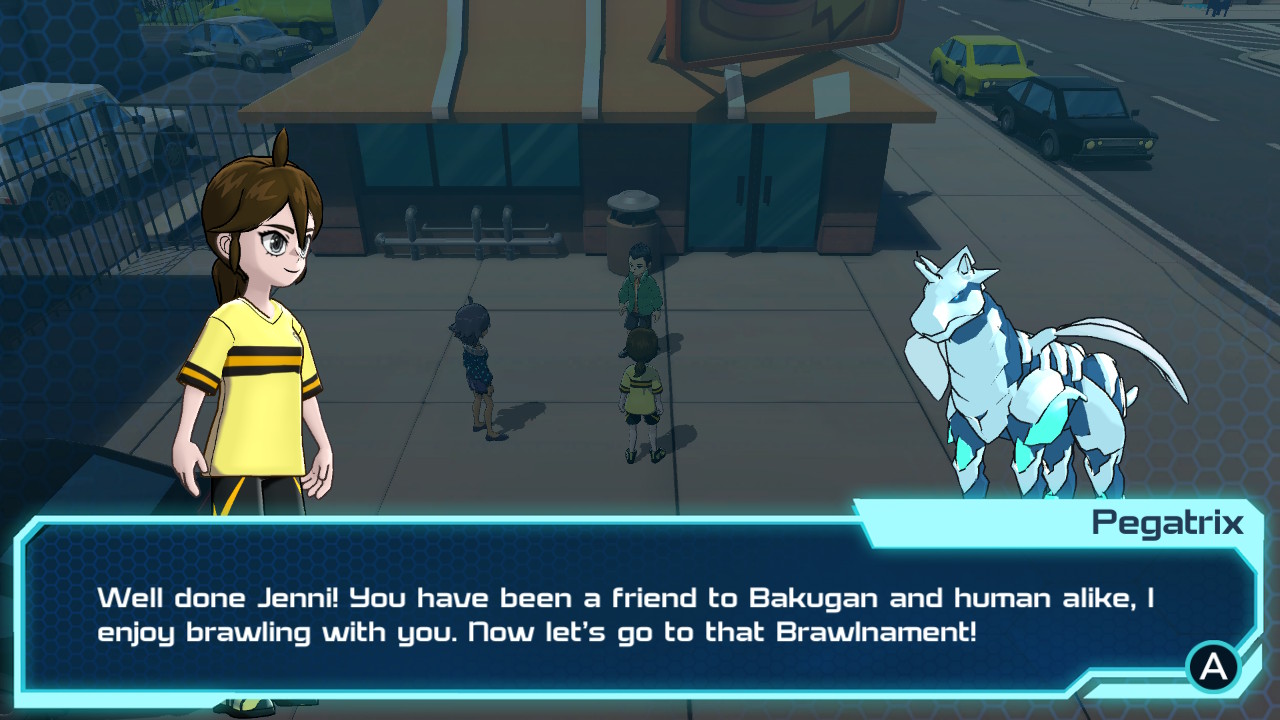
The online is more of the same. You can play with friends or random opponents, but the battles are exactly the same as in the story, and as of now there isn’t any sort of ranking or hub system. Just the option to play with friends, play with strangers, or go back to the main menu.
Conclusion
Bakugan: Champions of Vestroia is clearly not aimed at my demographic. It skews very, very young. However, that is the same demographic as Pokémon and numerous other more complicated games that offer more depth and variety. The graphics do look pretty nice, especially on the big screen, and I really liked most of the monster designs, but the battles are such a slog to go through that I was avoiding them and trying to get through them as quickly as possible. Very young Bakugan fans would probably get some enjoyment out of the game, but I can’t imagine them playing it too long without getting bored. Maybe some updates down the line will help speed up the battles, but as of launch, it’s just not a very fun experience.
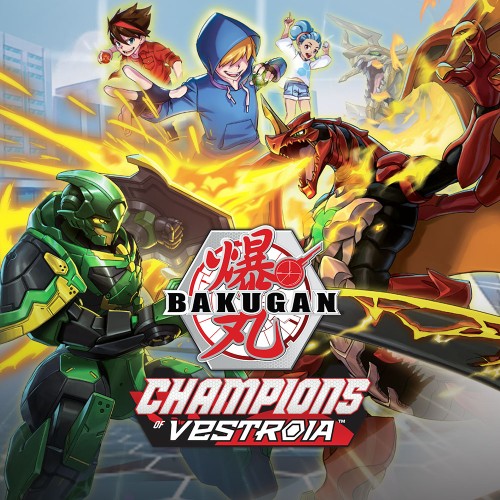
System: Nintendo Switch
Release Date: November 3, 2020
Categories: RPG
Publisher: Warner Bros. Interactive Entertainment
Developer: WayForward


